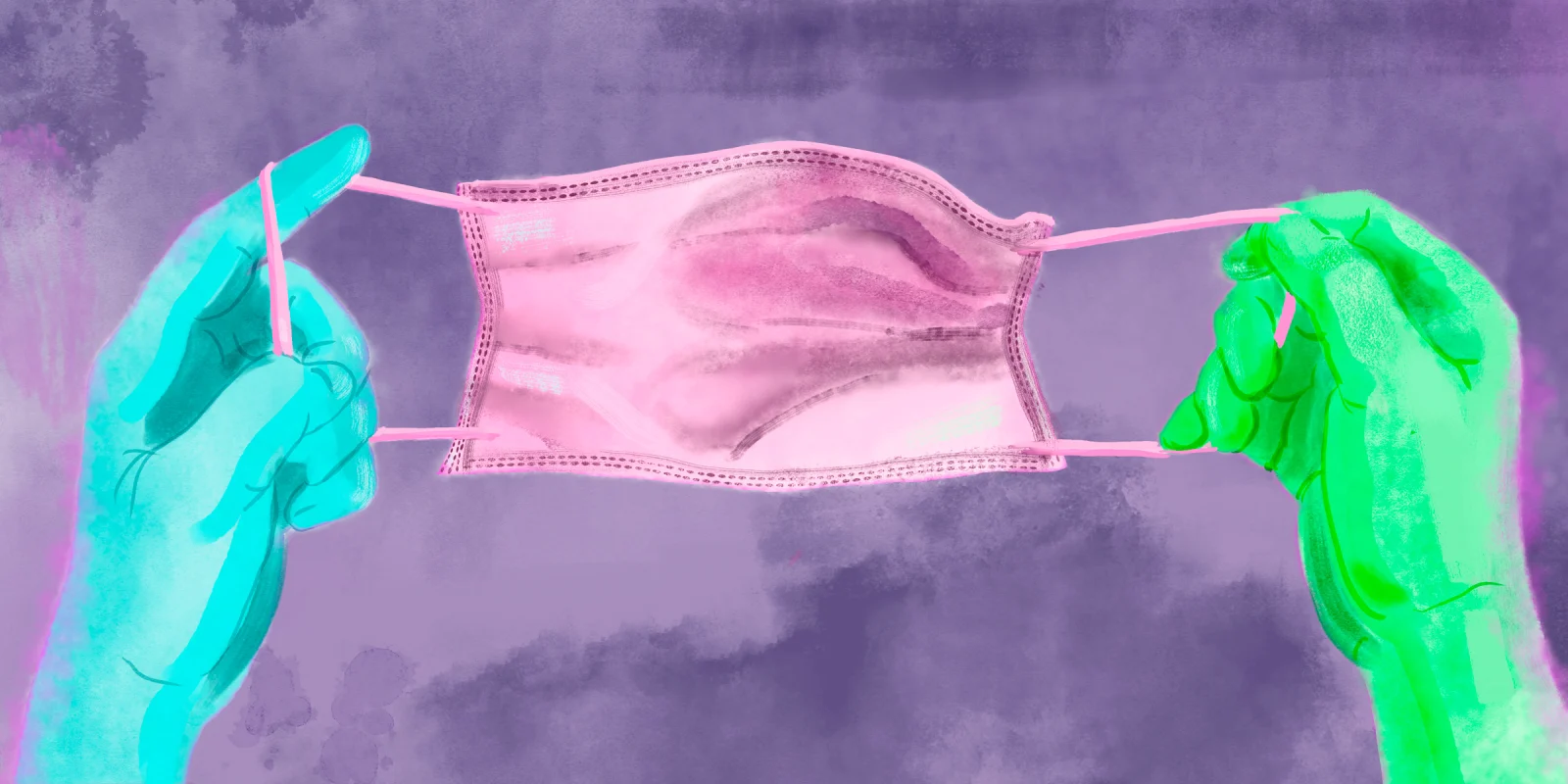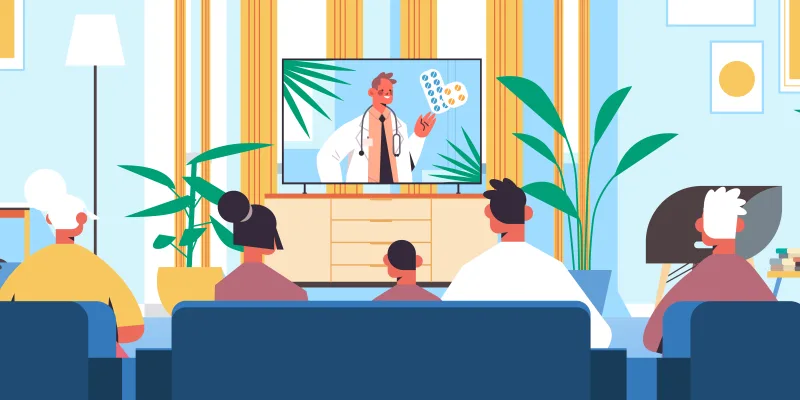In the first week of my clerkship year, I had six first days on six different services. As a third-year medical student in a longitudinal integrated clerkship (LIC) program, instead of the traditional, mostly inpatient block rotations, I spend the majority of my time in outpatient clinics within a single health system — and end up doing a little bit of everything in any given week.
For me, the notorious, larger-than-life, longed-for “third year” started on a Tuesday in January. I met my internal medicine preceptor in his office at 8:30 a.m., and together we saw several patients over the course of the morning. After lunch, I went to meet my surgery preceptor in the medical office building across the street, where we saw patients in her clinic all afternoon. I conducted telemedicine intakes and follow ups with my psychiatry preceptor on Wednesday, did well-checks with my pediatrics preceptor on Thursday, and on Friday I sat in on back-to-back appointments with a mother and daughter in my family medicine preceptor’s clinic. The following Monday, I went to the hospital to begin my first weeklong “inpatient immersion” on Labor and Delivery.
Each time I met one of my preceptors, I smiled with my eyes, while in my mind I tried to fill in the bottom half of their face that was hidden behind the mask, based on the physician profile I had looked up beforehand. Starting clerkships in a pandemic is strange, because clinical spaces are some of the few in our country that are still operating relatively normally — and yet it is also entirely different. I spent time with more humans in my first two weeks of clerkships than I had during all of the previous 10 months combined, but there were still barriers between us. I got to know people from behind layers of polypropylene and plastic. We conducted the pediatrics morning huddle standing six feet apart around the clinic’s large workspace, and ob/gyn sign-out was held via conference call, with various groups of people calling in from different rooms. The mother-daughter duo in my family medicine clinic comprised two-thirds of the in-person appointments we had that afternoon (the rest were telephone or video visits). I may never meet my psychiatry patients in person at all.
But despite the distance and the barriers, I covered a lot of relationship ground in those first few days. In fact, because COVID-19 had staggered schedules and moved many appointments online, the clinics were quieter, the census lower, the pace slower. Instead of hurrying between patient rooms to conduct histories and physicals with one eye on the clock, I spent a lot of one-on-one time with the people who will spend this year teaching me.
I learned that my internal medicine preceptor had been building his panel for over 20 years, and still cared for patients whom he’d met in his first year out of residency. He kept an individual file on each of his patients where he recorded information like where their kids were applying to college and if their grandmother was sick, so he could ask about those things at subsequent visits. When my pediatrics preceptor mentioned that our next patient was Spanish-speaking, I wondered how the clinic’s virtual language interpretation service would work — I was not expecting to walk into the room and have my (white American) preceptor launch into the visit in fluent Spanish. One of the residents I worked with on Labor and Delivery had stayed up all night playing with her 7-month-old son (because it was the only time she had with him) and then came to work and found a micro-placenta accreta on ultrasound that everyone else had missed. Another resident (a former Olympic gymnast) greeted each baby she delivered with a bright and warm “Happy Birthday!” My surgery preceptor’s husband bumped his head over the weekend and endured a laceration to his eyebrow; she stitched it up with her at-home suture kit. I learned the names of everyone’s kids.
As an LIC student, I will spend the entire year working with this small group of physician preceptors, so it makes sense I would get to know them. But what I didn’t expect was that they would become the most important people to me in the early weeks of my clerkship year. In discussions of clinical medical education, I’ve noticed that the focus is often on students’ experiences with patients. We talk less about the relationships between students and preceptors, in part, no doubt, because research has shown that in traditional block rotations, medical students may work with a new attending every week. What patients can teach us is indispensable, but what we can learn from our other teachers — the physicians, nurses, and residents who guide us in our first months as clinicians — is just as meaningful. They are like the hidden halves of our faces: out of the spotlight, but part of the whole.
During my inpatient ob/gyn immersion, I attached myself to an intern who made it her job to find me the best learning experience possible in every encounter. She brought me with her everywhere, into every triage room and labor check. She showed me how to use the ultrasound machine and insert a foley balloon, taught me which questions to ask in triage, and swabbed every potential amniotic fluid sample to make sure I had the chance to see ferning under the microscope. Knowing that I have an interest in ob/gyn as a future career path, she promised me that before the end of the week we would do a “hands on hands” delivery together. I ended up missing several opportunities because of bad luck or bad timing, but finally, in the last two hours of my last shift, a laboring patient whom I had already met was ready to push and happy to let me deliver her baby. Because it was almost change-of-shift, the incoming fourth-year resident volunteered to do the delivery with me instead of the intern. It made sense, given her greater level of experience and the intern’s other responsibilities, but I found myself feeling wistful. In the delivery room, I guided the soon-to-be newborn through the seven cardinal movements of labor, the resident’s hands over mine, and placed the baby on her mother’s chest. “Happy Birthday!” I exclaimed, and waited to be overcome with joy. To my surprise, I wasn’t. I felt happy and proud, but it was tempered with sadness. After an incredibly intense week of learning with the intern, in this literal crowning moment, I wished she had been there.
I expected to come away from my first few weeks on clerkships filled with narratives of patients’ lives, but as it turned out, the people whose stories stuck with me most strongly were my teachers. I bonded. I saw the kind of medicine I wanted to practice. I practiced it.
I hope that as I continue through my clerkship year, I will soak up as many lessons as possible from my patients while equally investing in, learning from, and treasuring my relationships with the physicians and residents who teach me. Someday, we’ll be able to see one another’s whole faces again — but until then, I will still appreciate the half we don’t see.
How has the pandemic affected your ability to build relationships — with patients or with colleagues? Tell us in the comments.
Fiona Miller is a second-year medical student at the University of California, San Francisco and the mother of three feisty kids. She is passionate about racial health equity, reproductive justice, and harnessing the power of human stories towards healing. Fiona is a 2020–2021 Doximity Op-Med Fellow.
Illustration by Jennifer Bogartz







